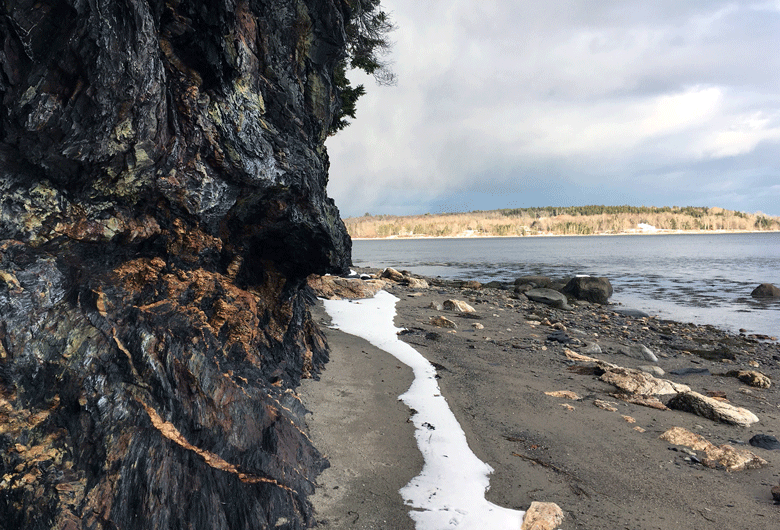Have you heard there’s another plan to develop Sears Island in Searsport?
The state is considering using 100 acres or so on the western shore as a site where enormous floating wind turbines will be built and then deployed to the Gulf of Maine as part of Maine’s renewable energy plan.
I agree with the urgent need to develop new sources of renewable energy, but not with the sacrifice of an ecological and recreational treasure on the Maine coast, whose forests and marine systems already store carbon.
Over more than 50 years, several plans to industrialize Sears Island have been proposed and ultimately rejected, for environmental and other reasons, but only after first stirring up considerable discord.
The entire 941-acre island is owned by the people of Maine. The state acquired it in pieces, over time, from Bangor Investment Company, part of Bangor and Aroostook Railroad, which had hoped to develop a resort there in the early 20th century.
The agreement states several uses and activities that are not appropriate for Sears Island…
The state took the first 50 acres in 1985 by eminent domain for a possible cargo port, built the causeway, and started a jetty, but the project fizzled by 1996. In 1997, the state purchased the rest of the island (except for the five-acre parcel with the cell tower at the south end of the island).
In 1995, permitting for a proposed cargo port met resistance because it would degrade or destroy important terrestrial and marine habitats. In 2003, opposition to an LNG terminal led Gov. John Baldacci, in January 2006, to convene stakeholders in the Sears Island Planning Initiative. About 45 stakeholders discussed their ideas for the future of Sears Island, and 38 signed a consensus agreement dated April 12, 2007.
The agreement states several uses and activities that are not appropriate for Sears Island, including nuclear or coal power, for example.
It also states that “Mack Point shall be given preference as an alternative to port development on Sears Island.” Today, 601 acres on the east side are protected by a conservation easement, with 330 acres reserved for possible future use as a “cargo/container port.”
To advance discussion of the current development plan, the state Department of Transportation has convened the Offshore Wind Port Advisory Group, a 19-member stakeholder group charged with “advising” the state on siting the proposed marshalling port. A marshalling port is where all components for the floating wind turbines would be gathered—blades, nacelles, turbines, tower sections, and more—and the floating foundations would be constructed of concrete and steel.
From there the floating turbines, with bases about 750-feet across, would be constructed and launched into Penobscot Bay, then towed to the deployment area in the Gulf of Maine.
At the Sept. 29 advisory group meeting we learned there are three possible marshalling port locations under consideration. Two are in Searsport—Sears Island, and the existing Sprague Terminal at Mack Point. The third is the Port of Eastport.
We also learned about four configuration options. Three are to place the entire marshalling port on about 100 acres at Mack Point, or Sears Island, or Eastport. The fourth configuration would use both Mack Point and Sears Island, with each location fulfilling different functions and materials being barged across Long Cove, as needed.
There are many factors to consider in each location. Is suitable land currently available? Is dredging required? What might be the impact on water, fisheries, wildlife, plants, and other habitat? How about impact on adjacent recreational land, residential areas, businesses? Are there archaeological, historic, or cultural considerations? What will be the impact on the host community, in terms of noise, lighting, visual, or aesthetic factors? Where will the workforce come from, be trained, live?
Based on what I know now, the better site for the proposed development is Mack Point, an industrial site for more than a century, so a considerably “greener” option. It is also the site that I believe would draw the fewest challenges, thus the option that would move forward most expeditiously toward helping Maine achieve its climate goals.
Rolf Olsen lives in Searsport and is vice president of Friends of Sears Island and is a member of DOT’s Offshore Wind Port Advisory Group. The views expressed are his own and do not reflect the position of Friends of Sears Island.





